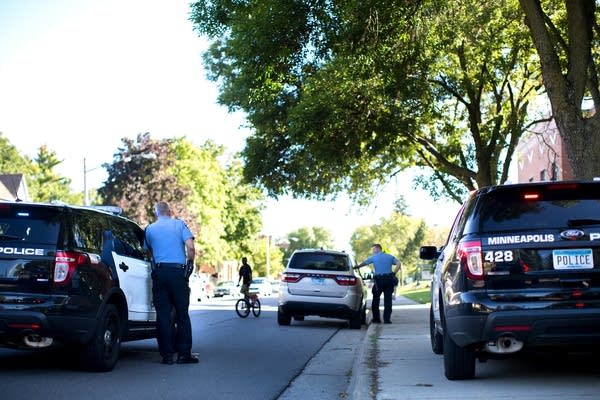The trouble with police traffic stop data

Minneapolis Police officers stop a vehicle during a September 2014 patrol. Minnesota police departments aren't required to collect data on who they stop. And when departments do collect demographic information, it's often sporadic and inconsistent, so there's no clear picture about who's being stopped and who's being cited.
Jennifer Simonson | MPR News
Go Deeper.
Create an account or log in to save stories.
Like this?
Thanks for liking this story! We have added it to a list of your favorite stories.


